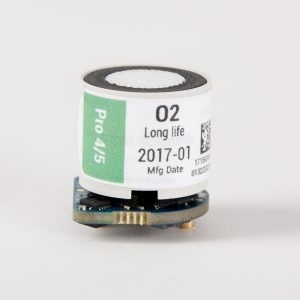
A gas detector depends upon sensors, and these may be damaged in several ways, by physical trauma, for instance, as when the detector is dropped, or when the environment contains a gas corrosive to the sensors. High levels of atmospheric humidity are also likely to reduce sensor functionality over time. Another reason is simply that aging oxygen sensors just don’t work well.
Conventional Oxygen Sensors
Similar to other sensors of electrochemical processes, oxygen sensors become relatively insensitive after being used for a long duration. On average, the typical oxygen sensor is used for two years, which is too low when compared to other sensors in this category such as that used for H2S or CO, which may be used for over four years.
This is one of the most commonly cited reasons why a gas detector fails, and it costs the users heavily in terms of paying for the replacement of sensors and losing time because no gas detection is possible until the replacement is completed. The good news is that users can now rejoice in the availability of long-life oxygen sensors for gas detection, fulfilling a long-standing demand.
Long-Life Oxygen Sensors
Long-life oxygen sensors are an advancement over traditional technology helping to reduce time and money expended on keeping gas detectors in working condition. If properly maintained, with calibration and bump testing being carried out as recommended, these sensors may be used for up to five years rather than the earlier two-year span.
The other advantages of these sensors are a reduced number of failures, less time required for instrument service, and financial savings on sensor repair and replacement. These are typically manufactured using lead-free technology which is ecologically friendly. The price is comparable to that of the earlier sensors as well.
The way in which long-life oxygen sensors function is somewhat different compared to the traditional oxygen sensors, being biased sensors:
- Even when the power is off they continue to use battery power
- In certain conditions they must be warmed up to start functioning
However, these minor requirements are negligible in the majority of gas detector applications.
The Need for Biased Sensors
Biased sensors are simply those in which the reference electrode is maintained at a higher potential than the sensing electrode, by about 600 mV, so that the sensor can be kept stable and deliver precise readings. While the instrument is on, the sensor remains biased by using the current flowing through it, but when it is powered off, the battery power is used by the sensor to maintain the bias at stable levels.
Test results show that once the instrument is fully charged, it can be stored without power for 15 days and still be able to run for an hour, which means that biasing does not consume much of the battery power, nor does it reduce the instrument’s run time.
The warm up time required is because these sensors remain charged only when they pull in constant current. Once the battery is drained, it has to be replaced or recharged, but the instrument still needs a little while to reach its stable state, the exact duration depending on how long it was without power. The table given below may show the time required for stabilization of a sensor:

The long-life oxygen sensor is designed to perform in the field for three to five years, solving the common gas detection industry problem of traditional oxygen sensor failure after eighteen to thirty months of use.
| UNPOWERED TIME |
CHARGING TIME TO STABILIZE |
| 15 Minutes |
15 Minutes |
| 1 Hour |
25 Minutes |
| 10 Hours |
75 Minutes |
| 1 Day |
2 Hours |
| 1 Week |
3 Hours |
If a long-life oxygen sensor comes to the end of its life and must be replaced, the sensor will require to stabilize before it can function normally. The new sensor will arrive with a coin cell battery, therefore, to help the sensor maintain bias until its installation within the detector. Even then, following replacement, the gas detector will bias the sensor to optimal stability levels, a process which generally takes under 15 minutes.
Instability occurs with biased oxygen sensors, leading to defective readings, under any of the following conditions:
- The battery is withdrawn from the instrument for some time
- The instrument is kept on after passing below the critical level of battery power
However, as long as the device is kept charged properly and functional, the sensor will function predictably and under all conditions.
Thus, long-life oxygen sensors do differ from traditional sensors, but the advantages outnumber the minor shortcomings, including the reduction in sensor failure occurrences with more reliable operation, less service time, more savings on repairs and replacements, and a better environmental profile. As long as the gas detector is maintained, and the sensors are calibrated, and bump tested, long-life oxygen sensors are a very good choice for users, increasing the safety levels significantly.

This information has been sourced, reviewed and adapted from materials provided by Industrial Scientific.
For more information on this source, please visit Industrial Scientific.